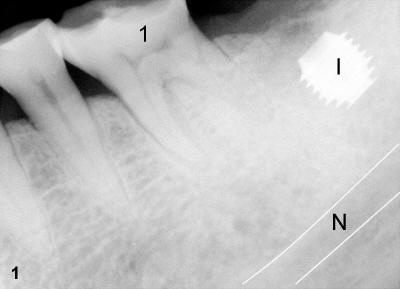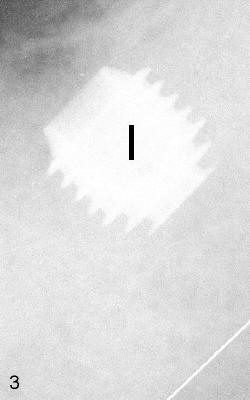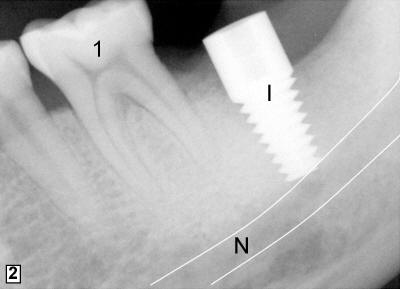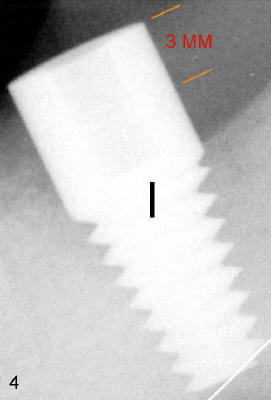



 |
 |
 |
 |
Dental Education Lecture: Short vs. Long Implants
When bone height is questionable, it should be safe to place a shorter implant (I) to avoid damaging the underlying nerve (N, compare Fig.1 vs. 2). Nerve injury is a big issue. You will lose sensation of the bottom lip and teeth on one side. It is quite uncomfortable and inconvenient.
These two implants have the same diameter (6 mm). The short implant is more or less cylindrical, whereas the long one is tapered (one end is smaller than the other). If they were in the same length, the short implant has larger surface area. Although the long implant looks much longer, the top 3 mm portion is not designed to bind to our bone (Fig.4). In contrast, the entire surface area of the short implant is supposed to be able to bind to the bone. In addition, the short implant has special design of threads, which are more or less square (Fig.3). This type of threads has more surface area than that of long implant (Fig.4). Besides, the upper portion of the implant binds to the bone the best with the highest density. The other portion is not so important. That is, the length of the implant is not so critical. Last, maybe not the least important, the short implant is completely buried inside the bone, whereas the top part of the long implant is exposed to oral cavity. The environment for healing is better for the short implant. Therefore, the short implant usually heals in quicker manner. In brief, the longer does not necessarily mean the better. The doctor decides which implant to use depending upon your condition.
Xin Wei, DDS, PhD, MS 1st edition 03/27/2011, last revision 03/27/2011